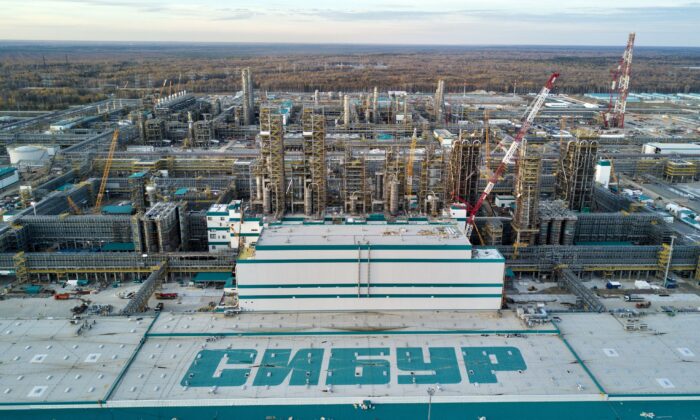By Antonio Graceffo
Commentary
So far, the Russian oil cap is having the desired effect. Russia’s economy is hurting, and the European Union has access to cheap oil. But maintaining the status quo will be a delicate game of financial carrot and stick.
Since the war in Ukraine began, the United States, the G-7, the EU, and other allies began imposing economic sanctions on Russia. The sanctions are meant to have two effects: punish Russia for violating the accepted rules and norms of the global community by invading and occupying a sovereign nation unprovoked, and reduce Russia’s income.
Fighting a war is expensive. And if the sanctions can cut off Russia’s access to cash, Moscow will run out of money and be unable to continue the fight. The United States used a similar strategy during the Cold War when it sucked the USSR into an arms race that eventually broke the Kremlin’s banks. But this time, the United States doesn’t have to spend much to inflict financial damage on Russia.
Last year, the U.S. Treasury Department’s Office of Foreign Assets Control (OFAC) came up with a plan to cut Russia’s oil income by imposing a price cap of $60 per barrel. It took a lot of finagling from the United States to convince its allies to go along with the cap. The EU and the United Kingdom were concerned about facing an energy crisis if Russian President Vladimir Putin should choose to cut off the taps completely. Greece and other countries with significant maritime interests did not want to give up the income they earned from transportation.
By December, a price cap coalition was formed consisting of the G-7 nations (the United States, Canada, France, Germany, Italy, Japan, and the United Kingdom) along with the EU and Australia. These countries agreed only to finance, insure, transport, or broker vessels carrying Russian oil if that oil was priced below the $60 cap. If countries want to pay a higher price for Russian oil, they have to make their own arrangements outside of the coalition. Finding an insurer is hard because the largest maritime insurance companies are British, European, or American.
Ukraine and some EU members, such as Poland and the Baltic states, wanted to deal an even harsher blow to Russian income and set a much lower price cap, possibly as low as $30. But the danger is that Russia could cut production to compensate, decreasing the global supply and increasing global oil prices.
In that scenario, the EU would suffer the most as it depends on Russia for its energy. At the same time, Russia would benefit by being able to sell oil to other buyers at higher prices. Luckily, this has not happened mainly because the cap price was right in the sweet spot, and Russia is better off selling at $60 than cutting production.
Russia’s oil revenues are in decline, and Moscow is experiencing a record budget deficit, which shows the cap is working. Part of the reason for the cap’s success is that the world price of oil is dropping in response to slowing demand caused by a sluggish global economy. However, Russian oil prices have decreased more than the global average. During the first days of the new year, crude oil shipments out of Russia’s two largest western ports had averaged just under $40 a barrel, a 35 percent decrease compared to November and a 50 percent decrease compared to June 2022.
By contrast, the world price of Brent crude is down 15 percent since November and 37 percent since June. This means that Russian oil is dropping in price faster than the global average. More importantly, it means that decreased supply has not pushed global oil prices back up.
Looking for other options to sell its oil, Russia has turned to China, India, and Turkey, which agreed to buy, but at a discount. And not only is Russia forced to sell them the oil cheaply, but it must also bear the increased cost of shipping the oil all the way to Asia rather than sending it the much shorter distance to Europe. Some experts say that the lack of access to the European markets and the forced additional transport cost hurt Russia even more than the price cap.
As world oil prices are in decline, it is possible that the United States and its allies will agree to reduce the cap even further. Under the terms of the coalition, members will meet every two months to discuss any price adjustments. All of the other sanctions against Russia were undermined by the fact that Russia could continue to earn money on energy sales. Tightening the screws on oil will help Moscow feel the burden of its war in Ukraine.






